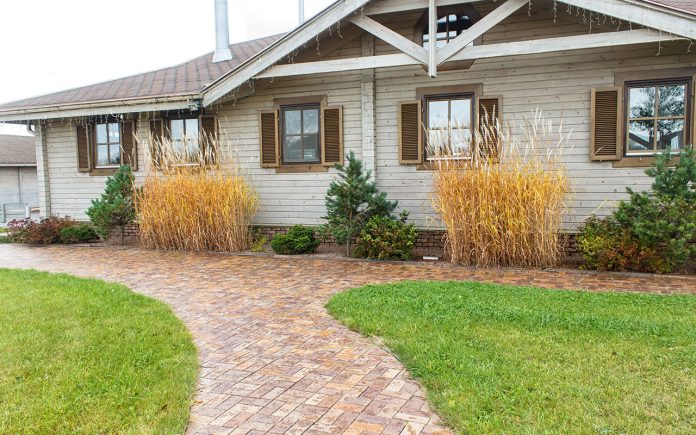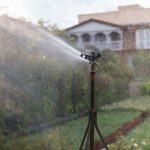Anyone who has a space in the garden with grass or is in charge of taking care of a grassy area, has encountered the dreaded yellow stains more than once. This problem, which can have many causes, is one of the problems that brings the most headaches to gardeners and gardening enthusiasts around the world, but luckily it always has a solution.
If you want to know why the grass turns yellowish and what are the most important lawn care to improve, join us in this article from EcologíaVerde in which we clarify the causes of yellow grass and how to recover it.
You may also like: How to remove weeds from lawns
Yellow grass due to excessive temperatures
There are a large number of species and varieties of grass, each one is suitable for certain climates and conditions. If you live in a warm area and your lawn is exposed to direct sun, it is very possible that you will find large yellow areas where the light is more intense, especially at midday.
Lawns are very stressed under intense sun and species or varieties that are not prepared for very hot environments do so even more. Pay close attention to the characteristics of your climate before planting the grass and try to make sure that the needs of the grass are adequate to what you can provide it.
Yellow grass due to drought
Just as too much sun can weaken your lawn and make it yellow, a lack of water will have a very similar effect: dry, yellow, brittle grass. Again, each type of lawn has very different irrigation needs, and these are largely affected by soil drainage and the climate of the area. Pay attention to how you water, trying not to leave areas without water or other flooded areas, and to the possible unevenness of the terrain, which can cause the water to concentrate in certain points.
Lawn diseased by waterlogging
If it is possible for the lawn to yellow due to lack of watering, it is also possible for the opposite to happen. People without much experience with gardening tend to think that the more water a plant receives, the better for it, but those of us who have been in this for a while know that too much water tends to be more dangerous than too little.
When the soil becomes waterlogged or waterlogged, the roots lose the ability to breathe, and they tend to rot quickly. Without a root system to feed it, the aerial part of the plant is left without a food source, and it does not take long to die. In addition, excess humidity tends to lead to the appearance of all kinds of fungi, especially in mild or warm temperatures, which will soon attack the grass and leave yellow areas.
Yellow grass due to lack of sun
If there are trees in the area where you have planted the grass, it is possible that some of them will cast too much shade on a certain area of the grass that, if deprived of light for many hours a day, can end up yellowing and drying out. It is even possible that the roots of the tree have extended superficially under the grass and are depriving it of water or nutrients.
Yellow grass due to excess nitrogen
Nitrogen is one of the main nutrients of plants, and also one of the elements in which almost all fertilizers are richest. However, although nitrogen is essential for the development of vegetation, an excess of it changes the pH of the soil and burns the roots.
If your lawn yellows evenly, you are probably overfertilizing, so you should reduce the dose of fertilizer or look for one that is less rich in nitrogen. The excess of the other elements is usually much less important, and it takes really large amounts to make it a problem.
Another substance that is very rich in nitrogen is urine. If one or more dogs frequently urinate on a certain area of the lawn, the characteristic yellow spots bordered with green will eventually appear, in which the outer area is rich enough in nitrogen to fertilise the lawn, but in the centre the concentration is excessive and has burned the grass.
How to recover yellow grass
Once you have found the reason for your diseased lawn, do your best to change that element that is harming it.
- If your lawn is getting too much sun, watering it more often can help.
- It is also possible that the soil has become very compacted over time: treading and the accumulation of dead roots can make the soil impermeable, and it is necessary to scarify the soil to aerate it, usually at the end of summer and winter.
- You should also make sure that your lawn is not under the attack of fungi and, if so, you can treat them with an antifungal, always preferably homemade and organic, they are very easy to make.
If you want to learn more about lawns, feel free to read our articles on When and How to Plant Lawns and How to Remove Grass Weeds.
If you want to read similar articles to Yellow grass: causes and how to recover it, we recommend that you visit our Garden Care category.










